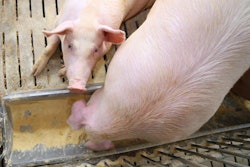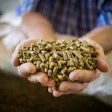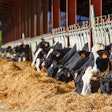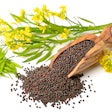
Copper can still be used to control gut health and improve animal performance and remain within regulation limits.
Copper, in the form of copper sulfate, is an old and trusty ingredient that has been used to control gut health and promote feed intake in weaned piglets. Its widespread use was eclipsed during the time pharmacological use of zinc oxide was allowed as research indicated zinc oxide was more efficient in controlling diarrheas.
Nevertheless, zinc oxide at such high dosages is being banned in the EU starting June 2022, and it is being replaced in many other parts of the world. Thus, copper is coming back into the spotlight as a potential agent to control gut health, especially in an era when in-feed antibiotics are also banned or on the decline.
Copper supplementation levels are also controlled by the EU. This means piglet feeds cannot contain more than 150 mg/kg Cu, which is more than their nutritional requirements (around 10 mg/kg) but still quite low compared with recommended dosage (250 mg/kg) to control gut health and improve feed intake. The reason for this strict control is that copper, like zinc, presents an environmental potential hazard as most is excreted through manure in arable soils.
Too much copper can lead to liver toxicity
In fact, copper toxicity from copper sulfate pharmacological dosages begins at 250 mg/kg. According to a recent presentation by Dr. Hans Stein from the University of Illinois hosted by Animine (France), copper accumulates in the liver of pigs and presents a potential toxicity danger that can hamper animal health.
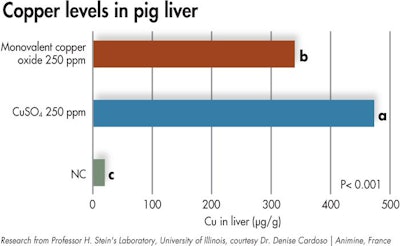
Copper sulfate use leads to higher copper accumulation in pig liver that may end up being toxic. (Research from Professor H. Stein’s Laboratory, University of Illinois, courtesy Dr. Denise Cardoso | Animine, France)
The deleterious effects of such liver copper toxicity are very well known in the case of sheep that cannot tolerate even low supplemental doses of copper. To this end, it was proposed that other forms of copper should be investigated that do not accumulate as much in the liver of pigs, while they offer similar beneficial effects in terms of animal growth performance and gut health.
Modern forms of copper
Indeed, non-water soluble sources, with which I have had personal positive experiences, can be characterized by high bioavailability, low liver accumulation and predictably high quality (the latter is a problem with unknown sources of copper). Which form to be used remains a matter of research, preference and education on the part of each nutritionist. The basic point is that copper sulfate can be replaced at lower dosages with modern copper forms that are well researched, safer for the animal, and more friendly for the environment as they do not have to be used at super-high dosages. Therefore, a nutritionist can still use copper to control gut health and improve animal performance and still be within regulation limits.
Copper and bacterial resistance
Another important topic discussed during the same conference was the effect of high dosages of copper on acquired resistance – not only to copper but also to certain antibiotics – by gut bacteria. Dr. Kristian Brandt from University of Copenhagen indicated that although in theory bacteria can develop resistance to most toxic compounds, in practice this is a matter of dosage versus response.
First, it was made clear that normal nutritional doses of copper (10 mg/kg) are not likely to cause bacteria to develop any kind of resistance. When we go to supra-nutritional levels up to 250 mg/kg the likelihood of resistance increases. At the moderate levels enforced by EU regulations, the chances are dramatically reduced but not eliminated. The amount of copper consumed by the animal does not depend only on the dosage; feed intake, digestibility and absorption dictate the absolute amount of copper that reaches the hindgut bacterial populations. Again, Brandt stressed that, although in theory resistance to copper can happen, the chances remain low under commercial situations. Here, it merits pointing out that copper and zinc are fed at supra-nutritional levels only during a short period of time during the life of a pig (a few weeks at most).
In contrast, it was pointed out that resistance in bacteria found in soils enriched with copper-rich manure can be a problem that requires further investigation. The same applies in the case of zinc. Thus, it is imperative to target high dosages of copper only when and where they are most efficiently used, and this is with young animals.
Copper remains a potent agent to control gut health and improve growth performance in weaned piglets. Choosing a modern form of copper ensures nutritionists remain within EU regulations and do not burden the animal with excess accumulated copper that can cause liver damage. At the same time, we can improve environmental sustainability by using lower but still highly effective dosages of supra-nutritional copper.



